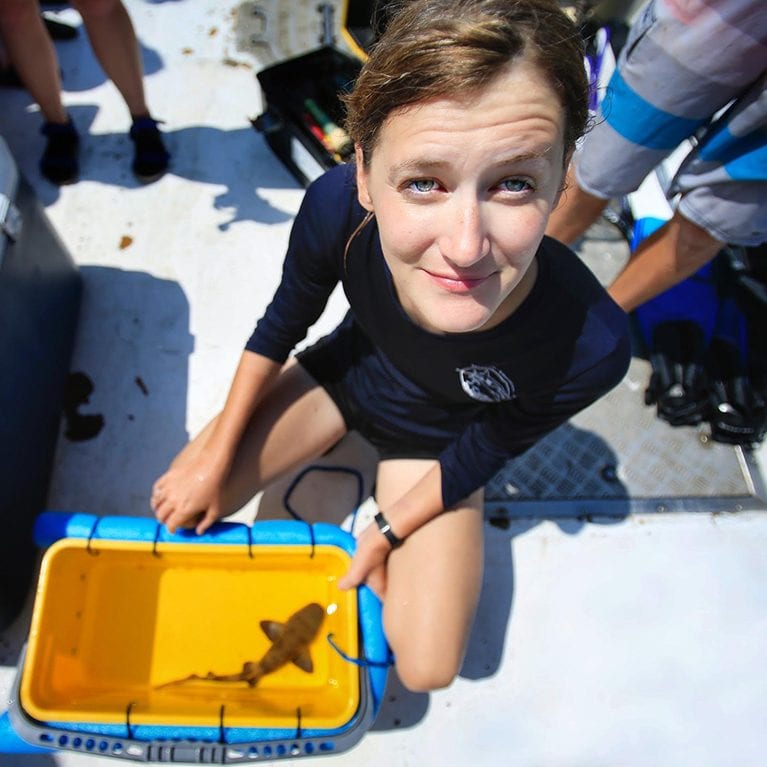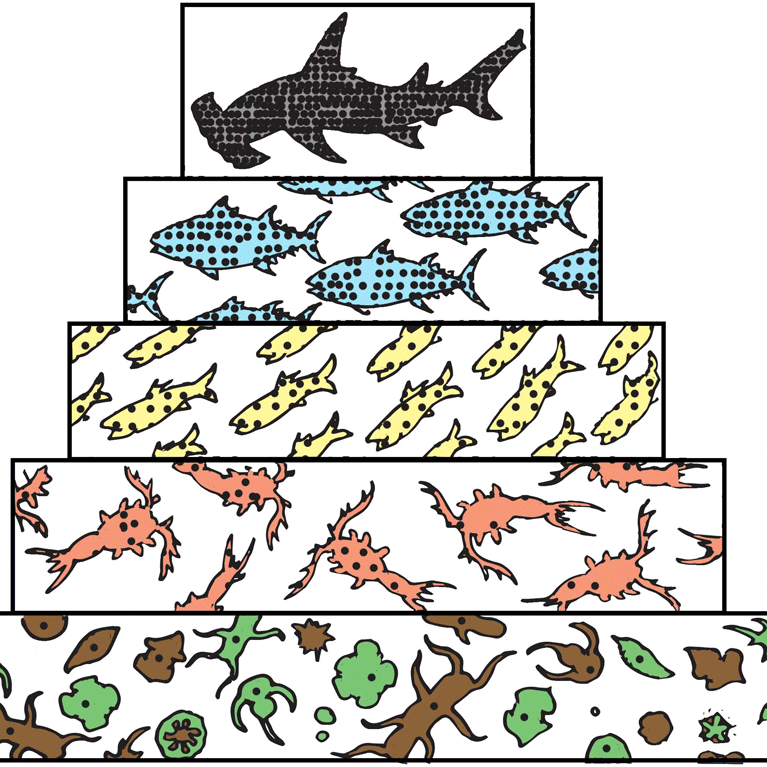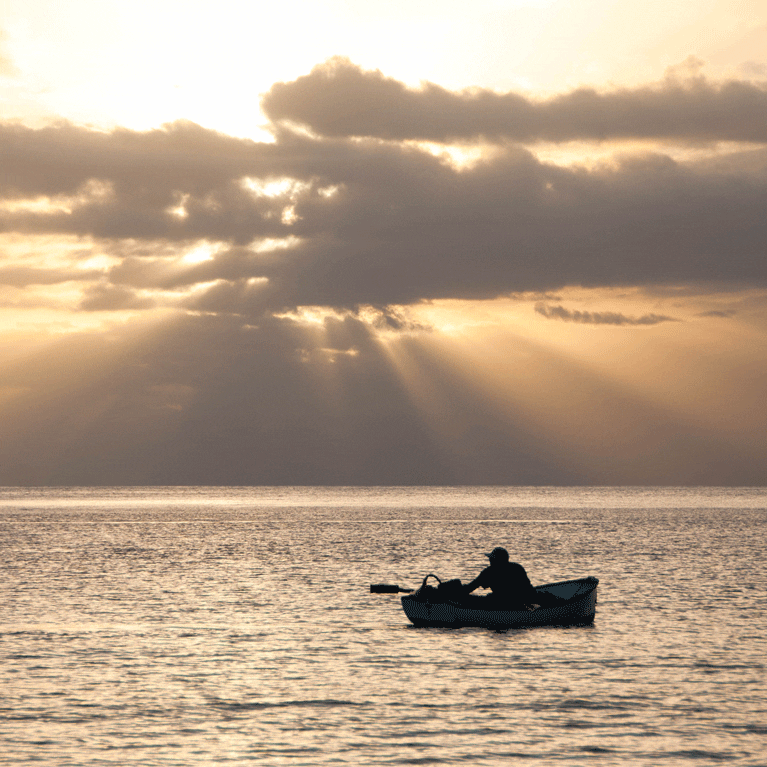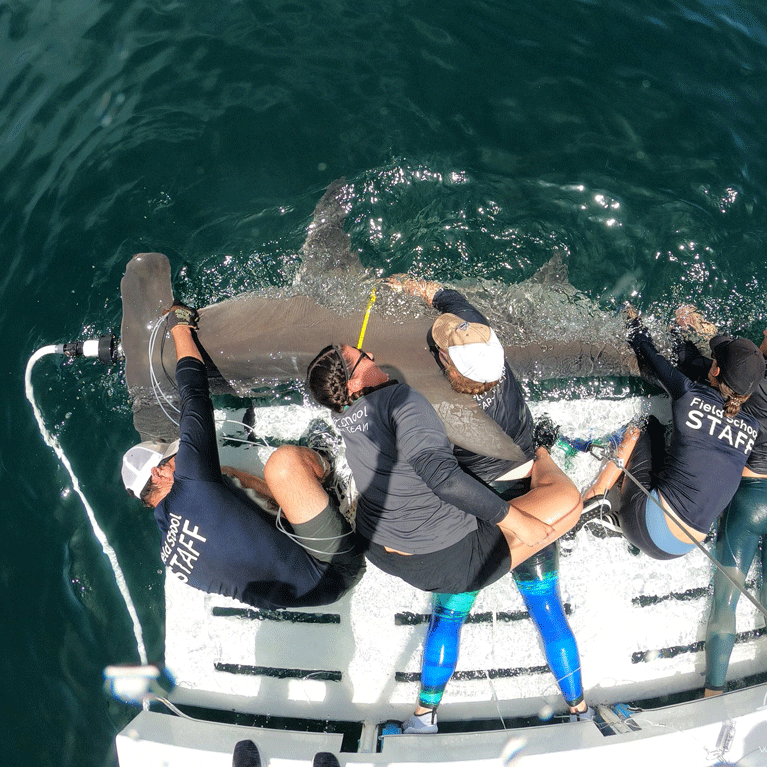Community conservation in the Caribbean
Shark fishing is becoming increasingly important in St Vincent, but little is known about the shark populations there. Catherine is figuring out which sharks live there and how they are utilised by local communities. She’s working with fishermen to achieve sustainable management of these fisheries.
After graduating from college in 2007, I received a Watson Fellowship, which supported a year-long international research project studying interactions between sharks and shoreline communities. One of my first stops was Bimini in The Bahamas, where a few weeks after I arrived a recreational fisherman caught, killed and finned a small bull shark. The fins were left to dry on the hotel dock –small, shrivelled and slightly pathetic. The dorsal fin barely filled the palm of my hand. I remember how angry and self-righteous I felt that day; the right and wrong of the situation seemed so clear, the act...




Collaborative community-based monitoring and management of shark populations in Saint Vincent and the Grenadines
To collect detailed data about shark species present and fished in the waters of Saint Vincent and the Grenadines, to characterize the sale and consumption of sharks by local populations, and to collaborate with fishermen and local managers to generate necessary data for establishing sustainable management of local shark fisheries.
Preliminary interview data suggests targeted commercial and subsistence shark fisheries have developed in the last five years in Saint Vincent. There is no data on the volume of shark catches, which species are targeted, or which species may be interacting with fishing gear. The rapid development of this fishery has occurred in response to several anthropogenic changes in Saint Vincent, including the depletion of demersal nearshore fisheries, a recent (2016) ban on the capture and consumption of sea turtles, and a young population increasingly educated in Trinidad and Tobago, where shark consumption is commonplace. This moment represents a unique opportunity, in collaboration with the fisheries ministry and local fishers, to collect baseline data in ecosystems in which sharks have not historically been targeted for exploitation and to provide the data needed for responsible local management, before unmanaged fishing devastates local shark populations.
Historically, shark meat has not been a preferred food item in the Caribbean. Most shark catches have come not from directed fisheries but from capture as non-target bycatch in near-shore demersal net or offshore longline fisheries (Shing 2006). Adams (1986) reported widespread prejudice against eating shark in the southeastern Caribbean, including Saint Vincent, because of their appearance, “unclean” eating habits, and scent of the flesh. The exception to this rule has been Trinidad, where blacktip (Carcharhinus limbatus) and Caribbean sharpnose (Rhizoprionodon porous) sharks have historically been consumed. Only in the last decade are countries in the southeastern Caribbean beginning to consider fisheries management plans for sharks, although most still have few or no formal regulations in place.
Recent survey data suggests a pronounced recent shift in perceptions of sharks as food in Saint Vincent. In semi-structured interviews, fishermen suggested demand for shark products and targeting of sharks has increased in the last five years. Respondents identified Trinidad, specifically educational opportunities there for Vincentian youth, as the pathway by which shark consumption was popularly introduced in Saint Vincent. Although perceptions of sharks as “scavengers” and religious prohibitions on eating fish without scales factor into demand, Vincentians described shark as a “delicacy” and “special occasion food,” and it is increasingly common in local restaurants. The current price of shark meat—more than $10 Eastern Caribbean (EC) per pound—suggests that it is no longer a food of last resort for the poor, who can obtain other fish protein for $3 EC per pound or less (Macdonald & Fielding, unpublished data—currently in preparation).
Saint Vincent’s location at the boundary where the Atlantic Ocean meets the Caribbean Sea likely drives considerable species diversity of sharks in Vincentian waters, though the area has been understudied to date. Landings in nearby Trinidad include numerous species of conservation concern, including several hammerhead species (e.g., Sphyrna mokarran, S. tudes, S. lewini, S. media), and threatened carcharhinids including sandbar (Carcharhinus plumbeus) and smalltail sharks (C. porosus). Other carcharhinid species which may be able to support well-managed fisheries (C. brevipinna, C. limbatus, C. acronotus, C. perezi) are also commonly caught; however, reports of frequent catches of juveniles and pregnant females are cause for concern about the sustainability of these fisheries (Shing 2006). Anecdotal evidence also suggests catches of threatened pelagic species in the St. Vincent-Bequia channel, including thresher sharks (Alopias spp.), great white (Carcharodon carcharias), blue sharks (Prionace glauca), silky sharks (C. falciformis), and possibly oceanic whitetip (C. longimanus).
Vincentian exposure to bioaccumulated environmental contaminants is of increasing concern. A local history of eating small cetaceans, which have been found to be highly contaminated with mercury, suggests exposure at levels which threaten human health (Fielding & Evans 2014). Increasing consumption of shark may exacerbate these threats to human health and contribute substantially to toxin exposure. Studies of two shark species in Trinidad showed that even relatively small sharks (S. Lewini and C. porosus) are potentially significant
- Characterize existing commercial and subsistence shark fisheries in Saint Vincent and the Grenadines, the potential effects of shark catches there on Caribbean shark conservation, and generate data needed to help improve local management of shark species.
- Identify human health risks associated with shark meat consumption, with particular reference to methylmercury contamination. This part of the project will contribute data about potential public health risks of shark consumption to a current Ministry of Health assessment of seafood products as a potential vector for human mercury exposure.
- Conduct a rapid ecological assessment of use, consumption, knowledge of and attitudes towards sharks in Saint Vincent and the Grenadines Use locally-led key informant interviews with fishermen, fishing communities, and restaurant owners to engage those with the most power to shape the practices associated with shark fisheries.
Public presentation at MODS: Save Our Seas Distinguished Speaker Series : Marine Conservation

